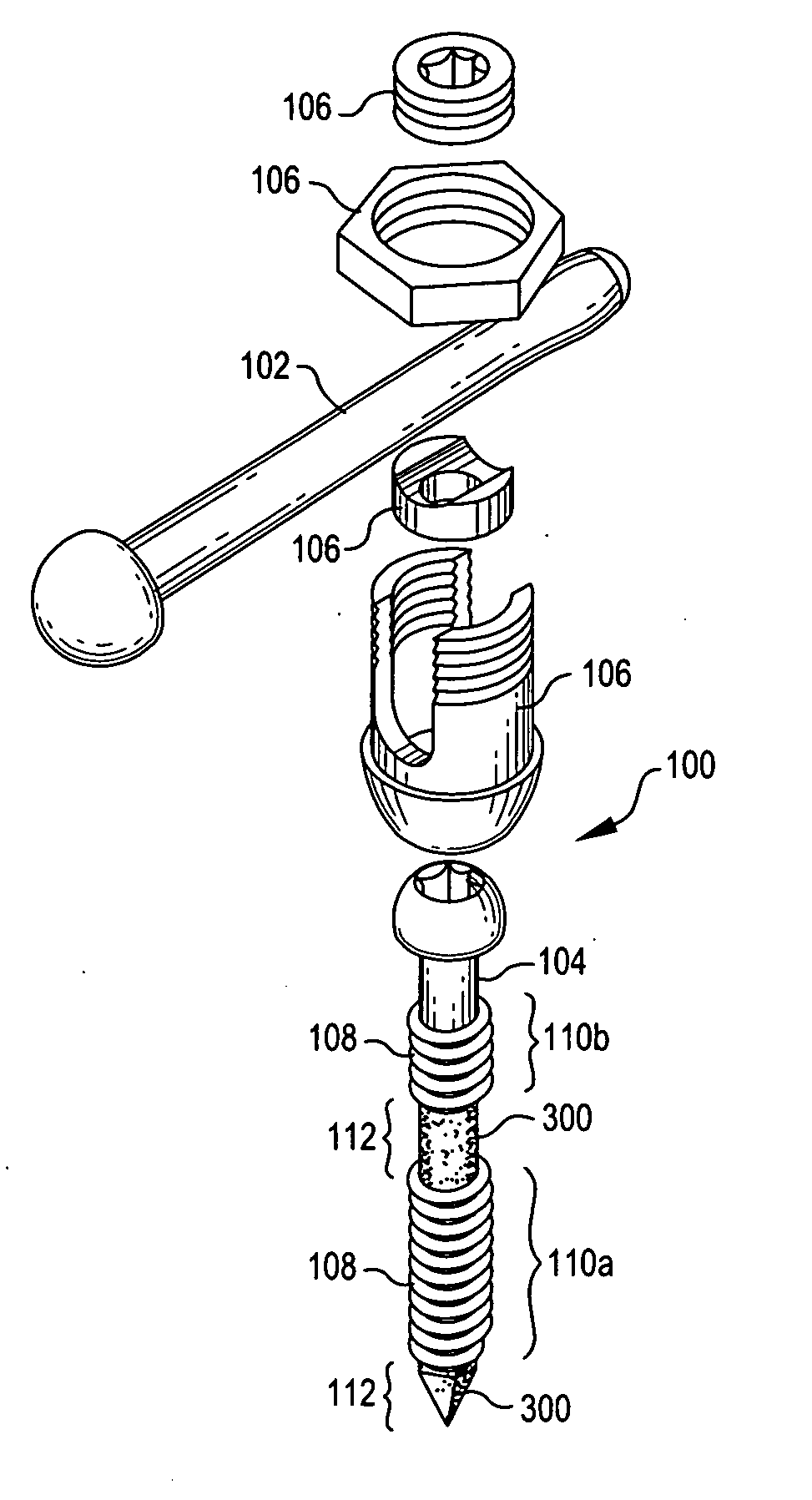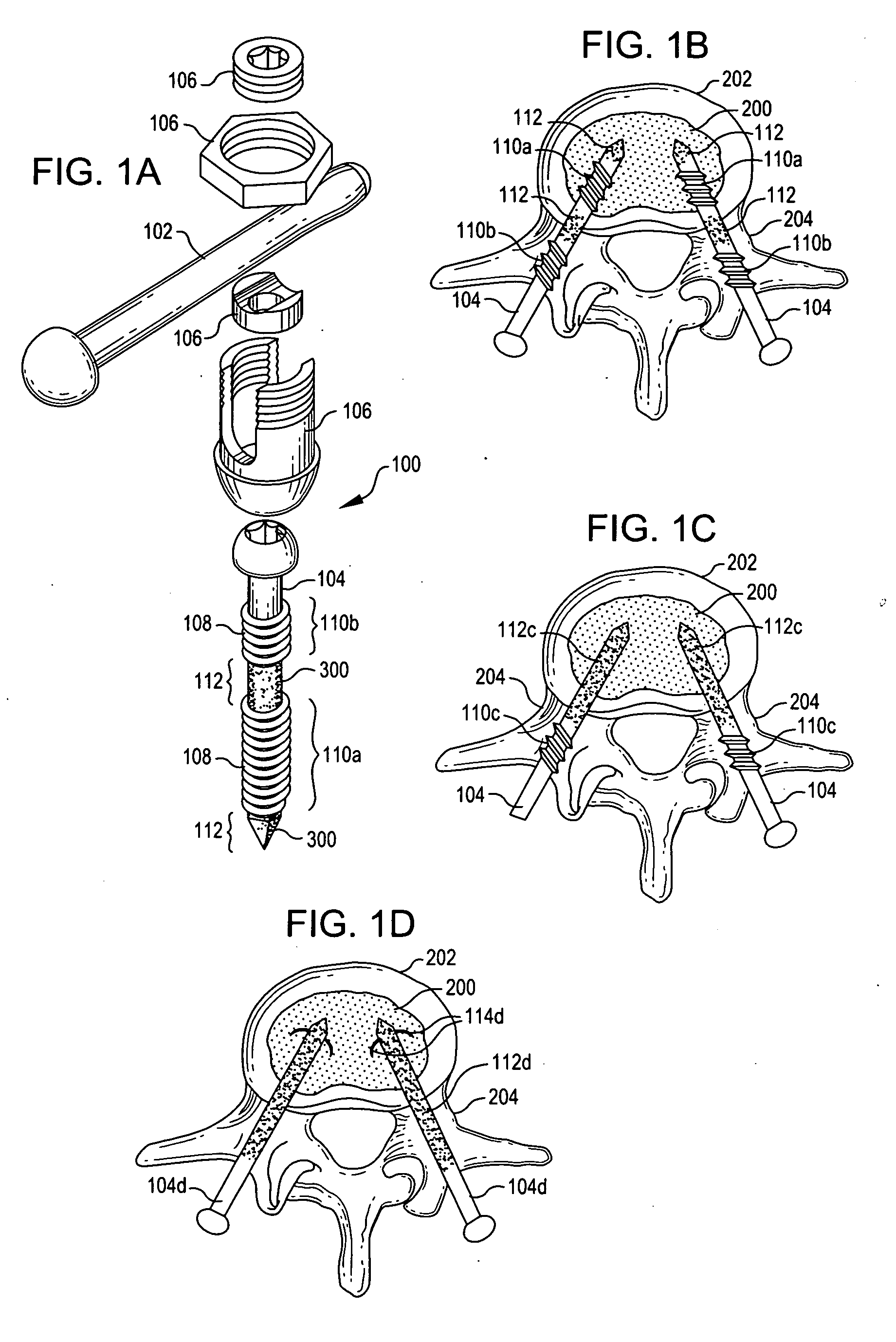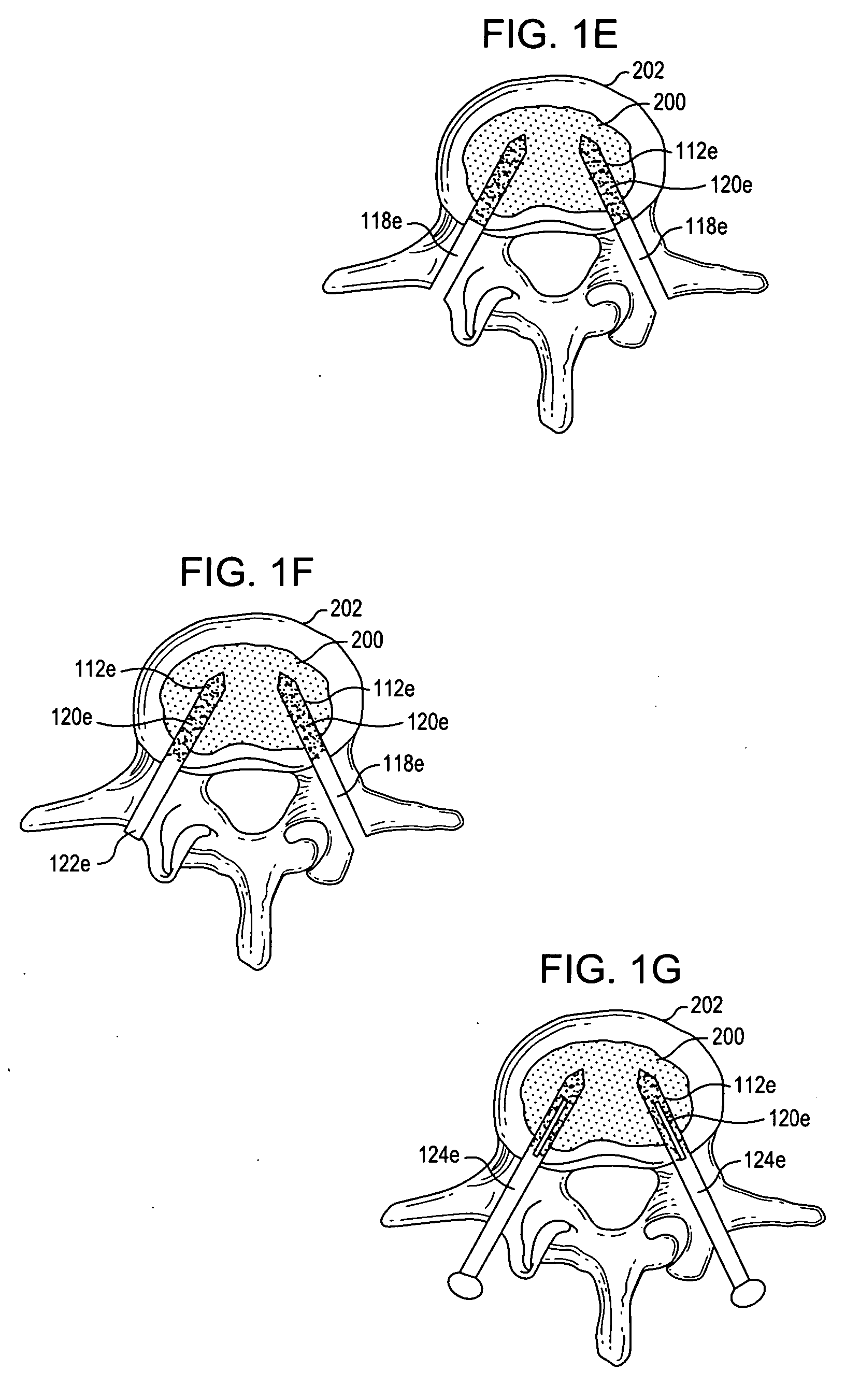Methods and devices for improved bonding of devices to bone
a technology of orthopedic devices and bone, applied in the field of surgical implants and orthopedics, can solve the problems of difficult to achieve direct bonding between bone and orthopedic devices, inability to meet the needs of patients, etc., and achieve the effect of improving interfacial strength
- Summary
- Abstract
- Description
- Claims
- Application Information
AI Technical Summary
Benefits of technology
Problems solved by technology
Method used
Image
Examples
Embodiment Construction
[0036] Although the present disclosure provides details enabling those skilled in the art to practice the various embodiments of the invention, it should be understood that the physical embodiments provided herein merely exemplify the invention, which may be embodied in other specific structures. Accordingly, while preferred embodiments of the invention are described, details of the preferred embodiments may be altered without departing from the invention. All embodiments that fall within the meaning and scope of the appended claims and equivalents thereto are therefore intended to be embraced by the claims.
[0037] The features of the present invention may be used or incorporated, with advantage, on a wide variety of medical devices, and in particular with the vertebral systems, including but not limited to, conventional vertebral fixation devices as well as those facet replacement, or arthroplasty, systems and devices specifically described in: “Facet Arthroplasty Devices And Metho...
PUM
 Login to View More
Login to View More Abstract
Description
Claims
Application Information
 Login to View More
Login to View More - R&D
- Intellectual Property
- Life Sciences
- Materials
- Tech Scout
- Unparalleled Data Quality
- Higher Quality Content
- 60% Fewer Hallucinations
Browse by: Latest US Patents, China's latest patents, Technical Efficacy Thesaurus, Application Domain, Technology Topic, Popular Technical Reports.
© 2025 PatSnap. All rights reserved.Legal|Privacy policy|Modern Slavery Act Transparency Statement|Sitemap|About US| Contact US: help@patsnap.com



